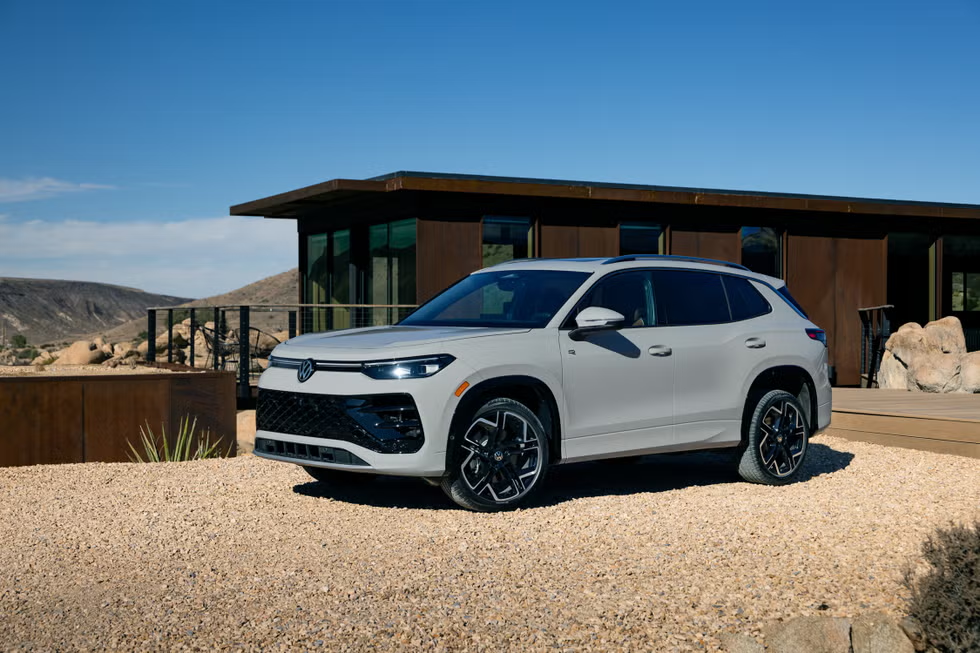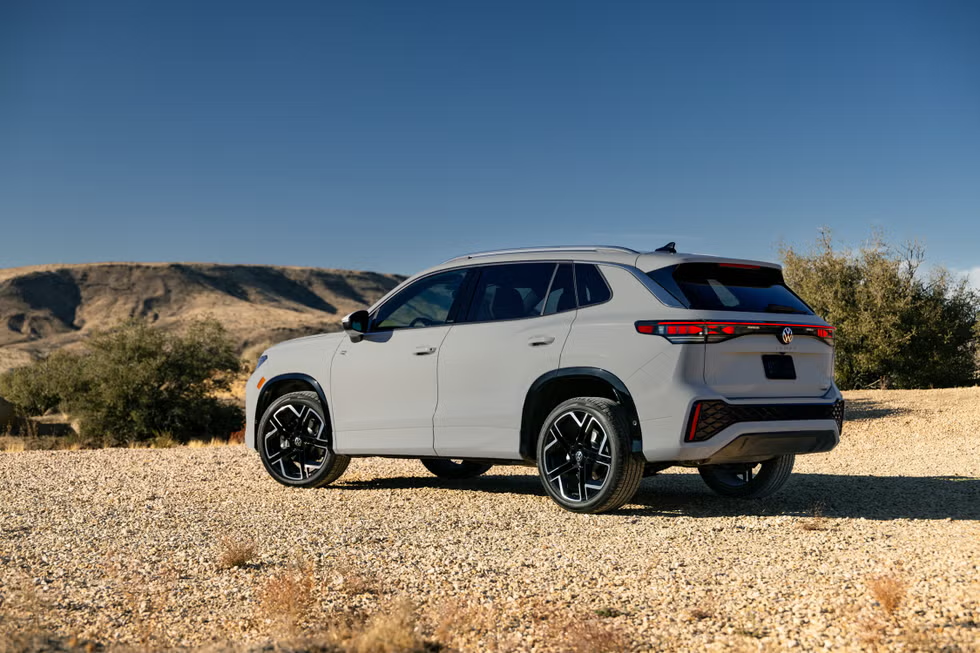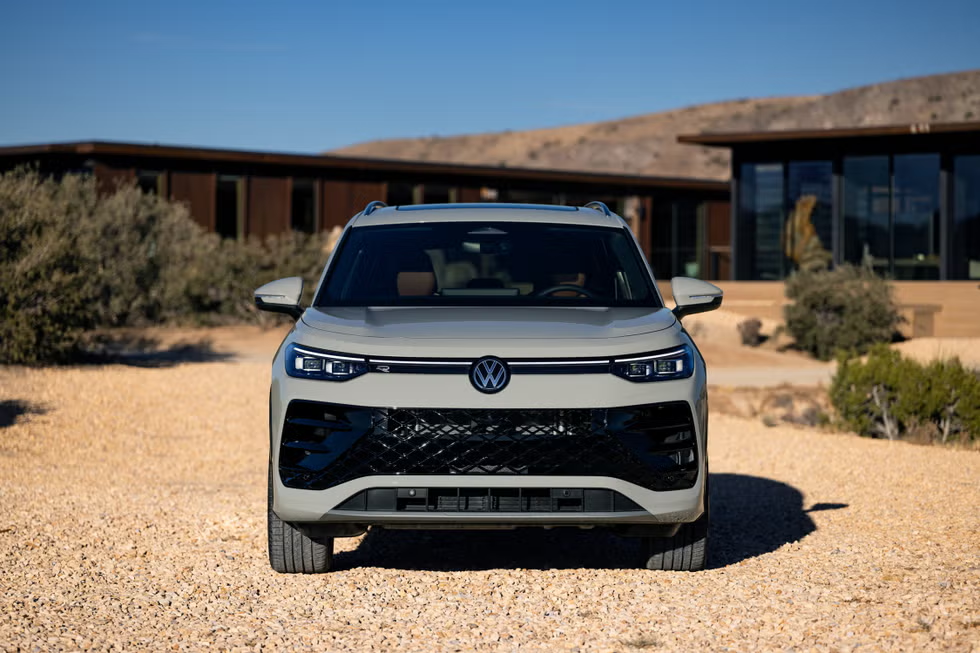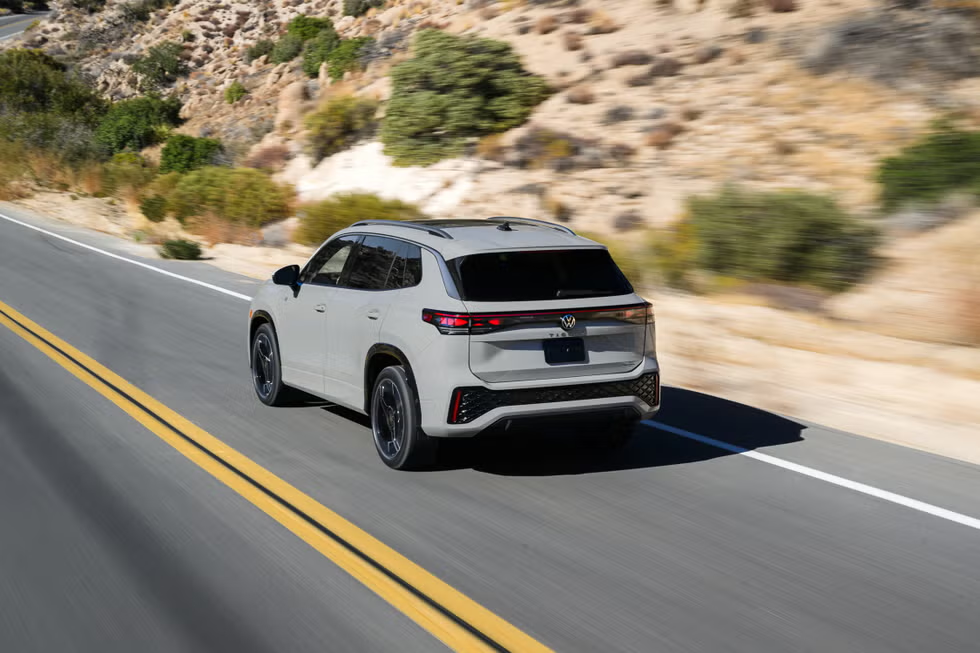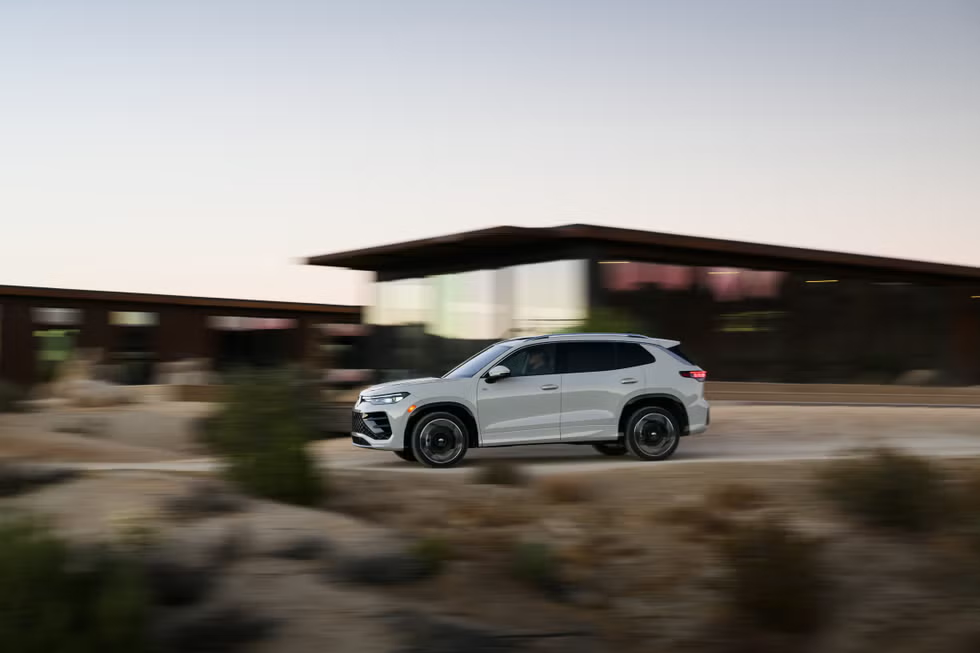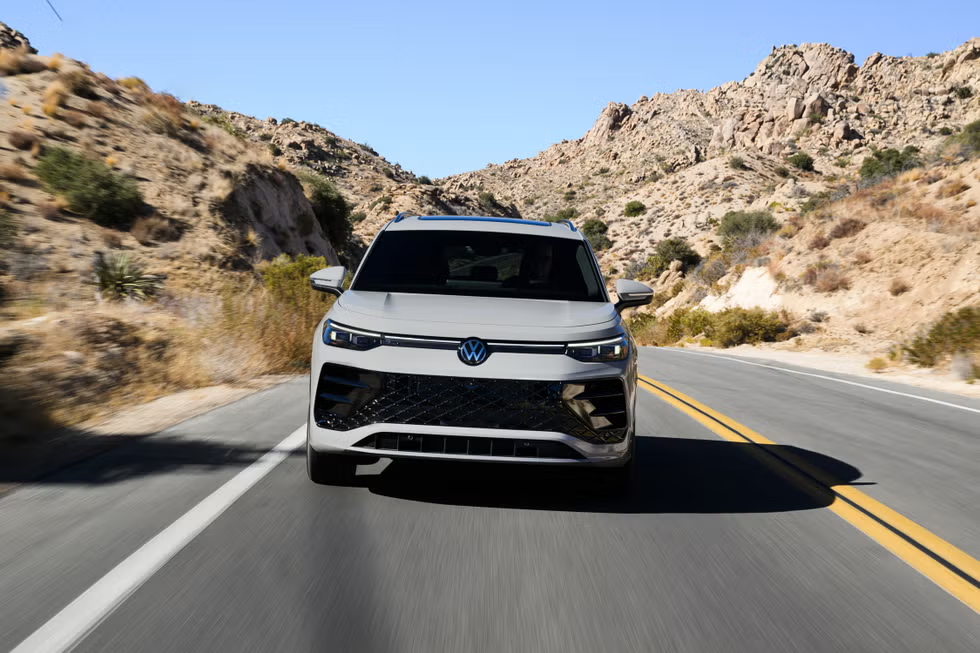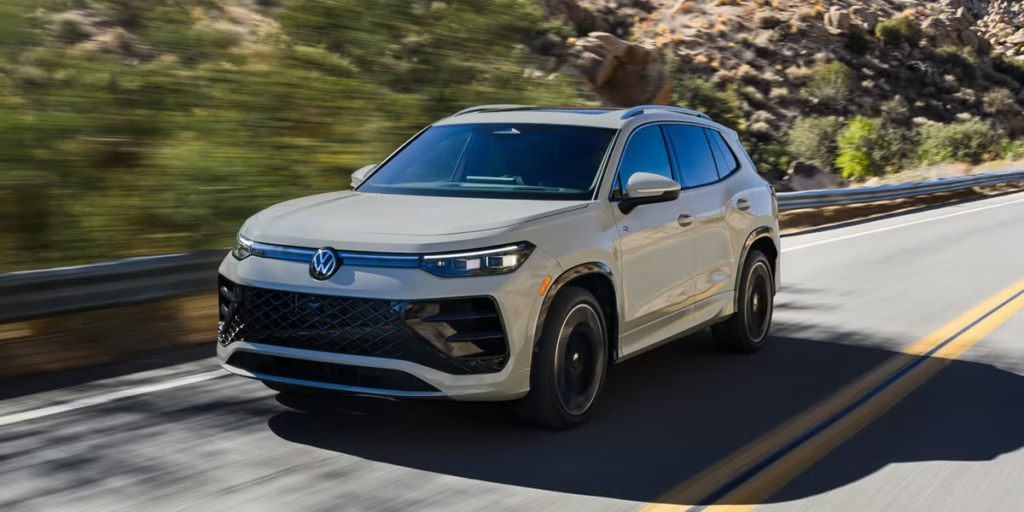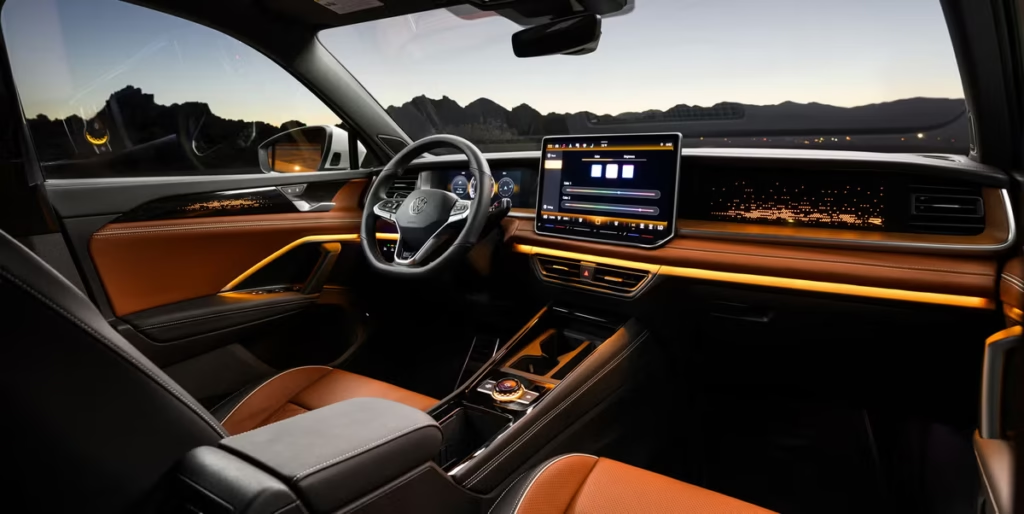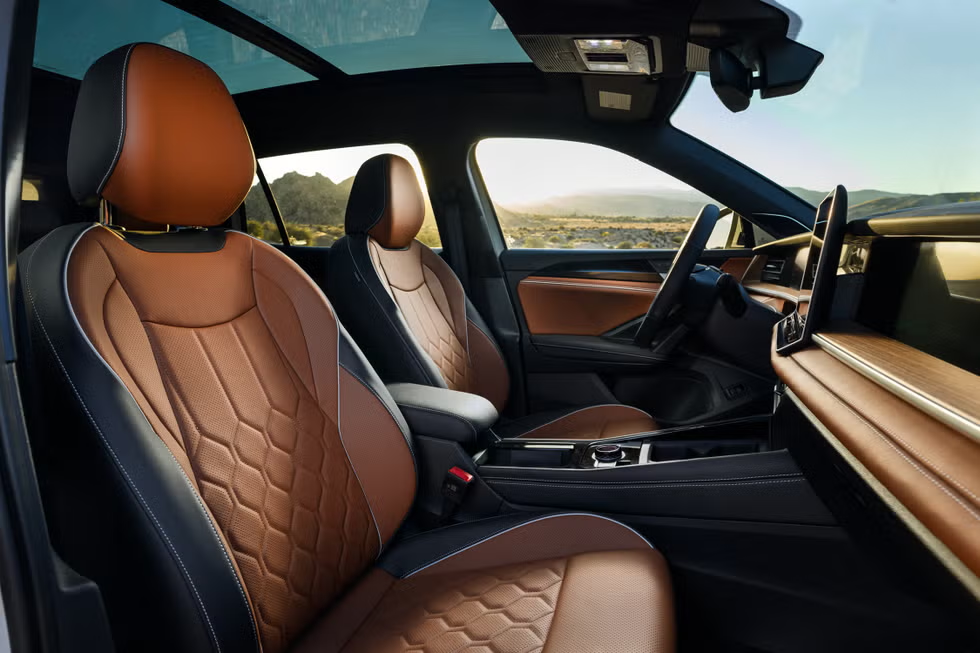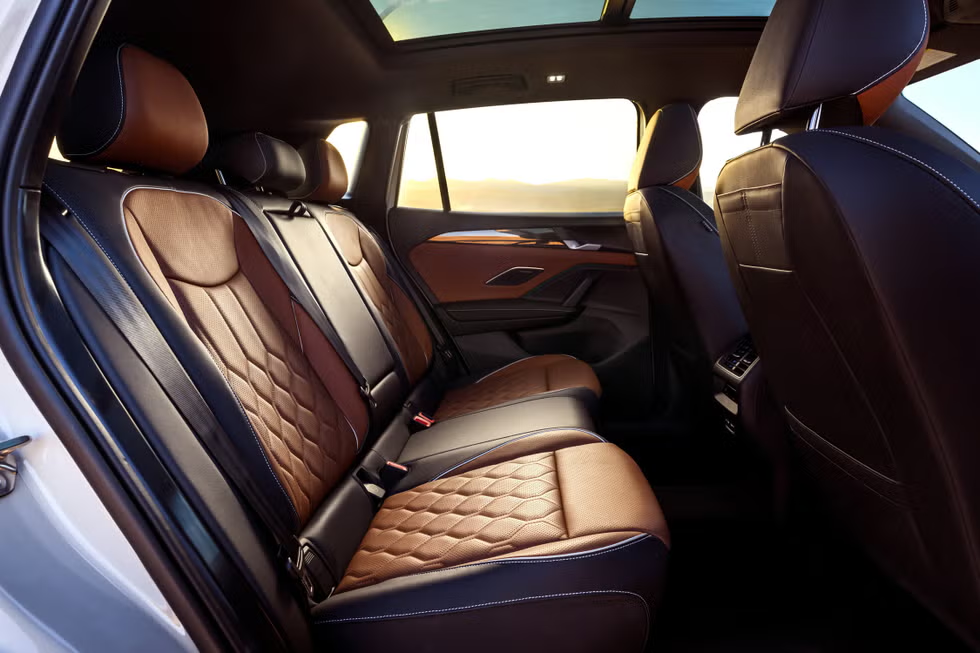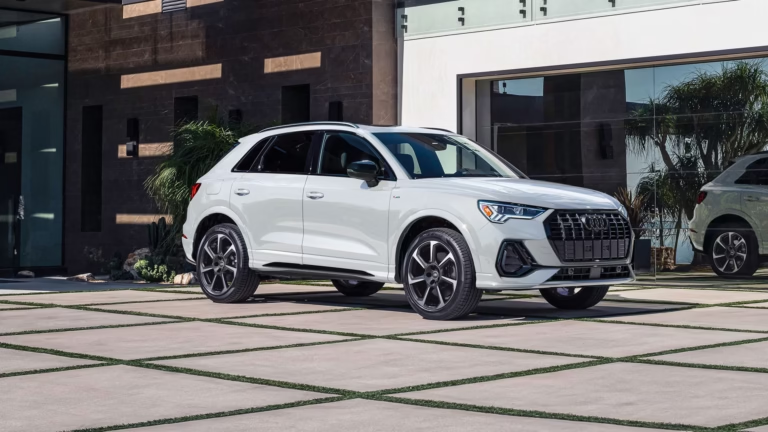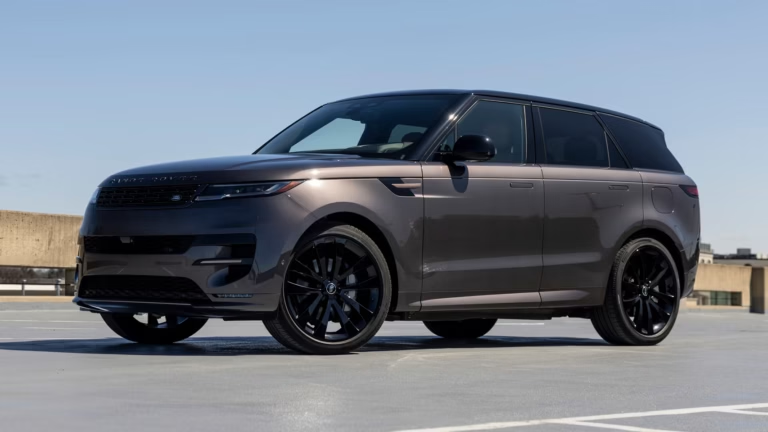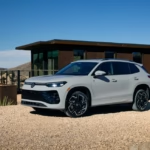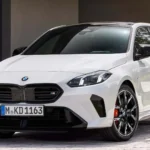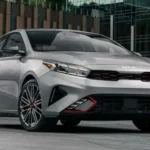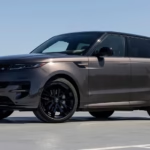In almost every aspect, the new 2025 Volkswagen Tiguan is better than its predecessor: it’s lighter, has more standard equipment, has more power, and is still reasonably priced in a market full of expensive SUVs.
Based on VW’s MQB Evo design, the revised Tiguan weighs 170 pounds less than its predecessor. Its improved fuel efficiency should appeal to budget-conscious consumers seeking value in the small crossover market and make driving it more pleasurable.
The Tiguan’s new design is sophisticated without being flimsy. Overall, it is shorter than the 2024 model it succeeds, but it keeps the same wheelbase, which gives it a more rugged stance that is accentuated by the sharper bodywork.
Exterior Design
The exterior of the 2025 Tiguan has been completely redesigned, with wheels shifted outward to give it a boxier stance and shorter overhangs. The SEL R-Line adds a touch of refinement to an otherwise fashionable crossover with its 20-inch wheels, body-color side sills and mirrors, illuminated front and rear emblems and light bars, and silver roof rails. VW mimics the mesh design on the back bumper, but the broad, black grille is a little too imposing.
Interior Features
Stepping inside the 2025 Tiguan, At the bottom of the screen is a row of climate controls, and at the upper left is a row that offers access to the media, phone, navigation, app drawer, and car settings. Even a button specifically designed to turn off the automated on-off feature is present. That’s great, however the glowing touch sliders for the temperature and volume controls on the screen face up, making it difficult to see them well in the daylight.
Between the parking brake and start-stop buttons on the center console is a central control knob. Its main function is volume control, but you can also flip through the drive modes or “atmospheres”—software that synchronizes the ambient lighting and audio—by clicking the central screen. You don’t have to look far from the road because the settings are shown on the center display, but switching between the two options is still a pain.
Volkswagen freed about 7.6 liters of storage space in the center console by moving the gear changer to the column. The SEL R-Line has plush, cozy quilted leather seats and real wood dash details. The Tiguan comes with heated front seats as standard, but the top grade also offers ventilated and massaging front seats. For added comfort and personalization, you can also direct the heating or cooling to the cushion or seatback.
In addition, the SEL R-Line has outboard rear seats and rear climate control. VW, however, has withdrawn the Tiguan’s third-row option due to consumer complaints.
Infotainment
A large, brilliant 15.0-inch central display is featured in the top-line Tiguan SEL R-line variant, while the base infotainment screen is 12.9 inches. Although certain settings required navigating through menus, the screen is fast and responsive, and with a few taps, it was easy to locate them. However the Standard infotainment display is a 10.3-inch driver display.
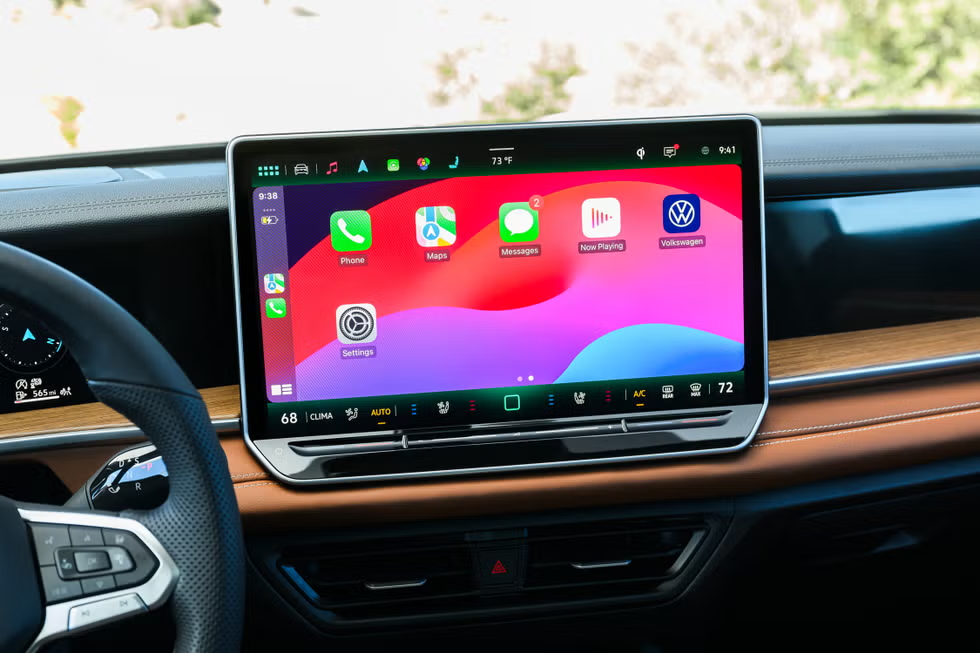
Engine, Horsepower, Drivetrain
The 2025 Tiguan’s 2.0-liter four-cylinder engine produces 201 horsepower as opposed to 184 for the previous model. According to Volkswagen, a revised camshaft design, injection system, and turbocharger are responsible for the power gain. It is compatible with an eight-speed transmission that is suitable for daily use.
For all trims except the SEL R-Line, which has it as standard, 4Motion all-wheel drive is an option; front-wheel drive is standard. Compared to the FWD variant, the 4Motion version produces somewhat greater torque (221 pound-feet) as opposed to just 207.
Efficiency is more important to the Tiguan than enjoyment, even in the Sport mode. However, since the Tiguan’s comfort and technology make up for its lack of power (which will be fixed with the Turbo), prospective buyers probably aren’t overly worried with performance specs in this market.
Drive Impressions
The 2025 Tiguan’s turbocharged 2.0-liter four-cylinder engine is still capable of pushing a 3,800-pound crossover, despite its increased power. With only a little noticeable road noise, the cabin is generally quiet and the ride is solid but pleasant. Despite being a little heavier, the steering is never tiresome.
Although the Tiguan isn’t fast, you won’t have to worry about swerving through traffic when necessary or overtaking a slow-moving vehicle. It will take some time to become accustomed to the brake pedal, though, as it takes a lot of travel before you can comfortably apply the brakes and slow down the car. Even when pushing the crossover, the 4Motion all-wheel-drive system manages the wet Montana roads of our journey without any problems.
Fuel Economy
While the 2025 Tiguan may have more power, the crossover is also lighter, which improves fuel efficiency. All-wheel-drive Tiguan SEL R-Line fuel economy ratings are 22 mpg in the city, 30 mpg on the highway, and 25 mpg overall. With front-wheel drive, the base S receives 26 city, 34 highway, and 29 total. The SE trims return a combined 28 city, 32 highway, and 25 city.
Pricing
In terms of Pricing, the base 2025 Tiguan price starts at $30,920 and is only $615 more costly than the 2024. Although the SEL R-Line costs $10,000 more, it provides a degree of affordable luxury that elevates the Tiguan above its MSRP.


